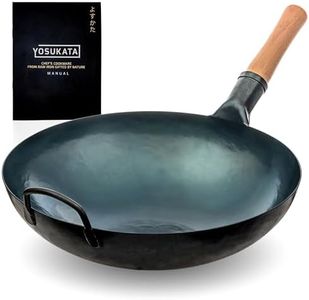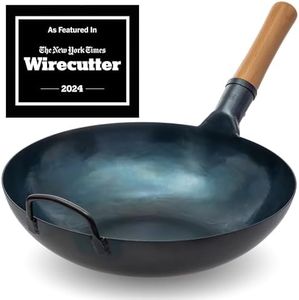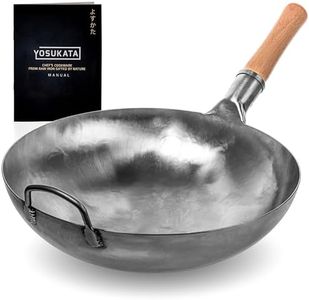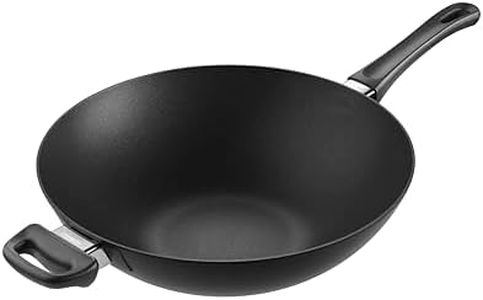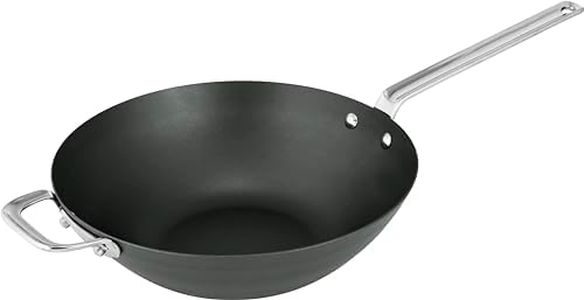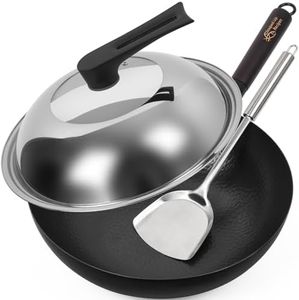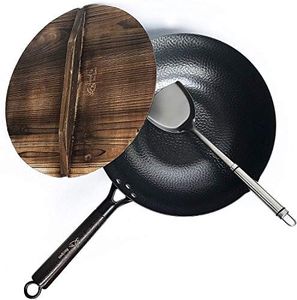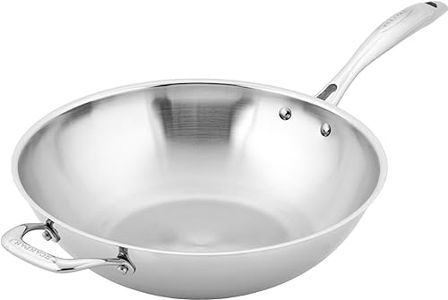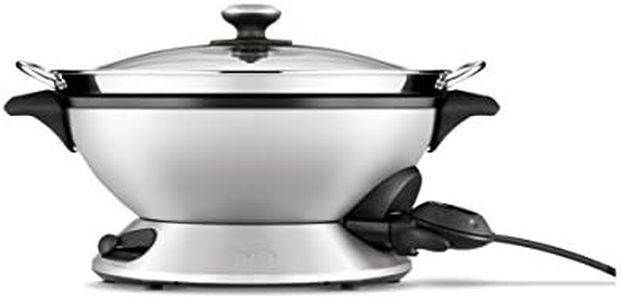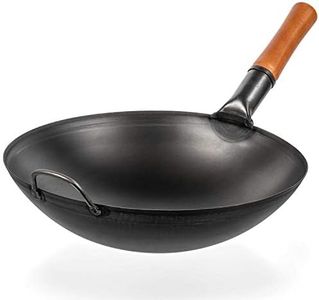We Use CookiesWe use cookies to enhance the security, performance,
functionality and for analytical and promotional activities. By continuing to browse this site you
are agreeing to our privacy policy
10 Best Wok For Cooking
From leading brands and best sellers available on the web.Buying Guide for the Best Wok For Cooking
When selecting a wok for cooking, it's important to consider your personal cooking habits, the types of meals you like to prepare, and the compatibility with your stove. A well-chosen wok not only makes stir-frying easier but also opens up many cooking techniques, such as steaming, deep-frying, and braising. Think about how often you'll use the wok, the ease of maintenance, and the storage space you have available.MaterialThe material of the wok influences its heating properties, weight, and maintenance. Common materials include carbon steel, cast iron, stainless steel, and non-stick coatings. Carbon steel is lightweight and heats quickly, developing a natural nonstick surface over time, ideal for high-heat cooking. Cast iron retains heat well and works for slow cooking, but it's heavy and needs careful seasoning to prevent rust. Stainless steel resists corrosion and is easy to maintain but can be heavy and slower to heat. Non-stick woks prevent food from sticking and simplify cleaning, but they may not handle high heat as well and can wear out quicker. Consider how much effort you're willing to put into upkeep and what feel you want in your cooking.
Size (Diameter)Woks come in different diameters, typically ranging from 10 to 16 inches. Smaller woks (10-12 inches) are suitable for one or two people or small servings, and they work well on standard kitchen stoves. Medium sizes (12-14 inches) offer a balance for most households, allowing you to cook family-sized portions without overcrowding. Large woks (over 14 inches) are best suited for big groups or if you often entertain, but they require strong burners and more storage space. Consider the number of people you typically cook for and the size of your stovetop.
Shape (Flat-bottom vs. Round-bottom)The bottom shape of a wok affects how it sits on your stove and how heat is distributed. Flat-bottom woks are designed for modern gas or electric stoves, ensuring even contact with the heat. Round-bottom woks are traditional and work best on gas rings or special wok burners, allowing for the most authentic stir-frying experience. Choose a flat-bottom if you have a standard stovetop and want maximum stability. If you have a gas stove and are eager to emulate traditional Asian cooking, a round-bottom might be ideal, provided you use the right wok ring.
Handle TypeWoks feature different handle types: two small loop handles (Cantonese style) or a long single handle with a helper handle (Mandarin/northern style). Loop handles allow for lifting large, heavy woks when filled with food, but require a towel or mitt for grip. Single long handles are easier for tossing ingredients and moving the wok on the stove, making them convenient for everyday cooking. Consider which handling style feels safer and more comfortable for you, especially given the wok's size and weight.
WeightThe weight of a wok impacts how easily you can handle and move it during cooking. Lightweight woks are easier to lift and toss, great for fast and frequent stir-frying, but may not hold heat as evenly. Heavier woks retain heat better but can be cumbersome to maneuver, especially when full. If you prefer energetic cooking styles or have limited strength, choose a lighter wok; for slow-cooked stews or professional-level heat retention, a heavier wok might be preferable.
Lid InclusionA lid allows you to use your wok for more than just stir-frying—it's helpful for steaming dumplings, simmering sauces, and braising meats. Some woks come with a lid included, while for others you'll need to purchase one separately. If you plan to explore a wider variety of dishes or want greater versatility from your wok, opt for a model that comes with a well-fitting lid.
Compatibility with Heat SourceNot all woks are suited for every stove type. Consider whether you have gas, electric, induction, or a glass-ceramic cooktop. Flat-bottom woks are best for electric and induction stoves as they have greater surface contact. Round-bottom woks work perfectly with gas and special wok burners. If you have induction, ensure the material is magnetic (like carbon steel or cast iron). Always check compatibility to avoid frustration and to get the most from your wok.
